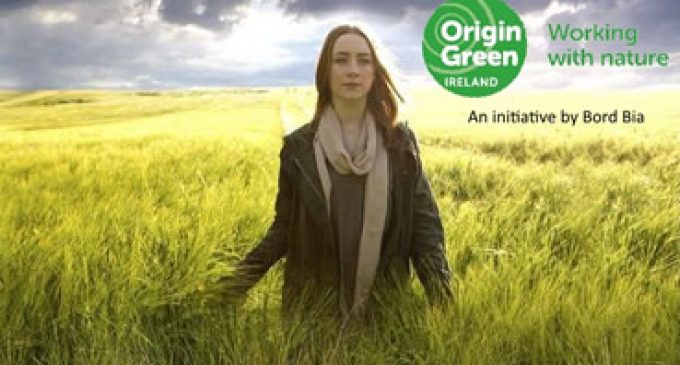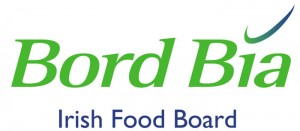Resilient Performance by Irish Food and Drink Exports in 2018

Despite a year of unprecedented global volatility, involving political uncertainty, extreme weather events and continuing currency fluctuations impacting competitiveness, the value of Irish food, drink and horticulture exports reached €12.1 billion in 2018, down just 4% from a record high in 2017, according to Bord Bia’s Export Performance and Prospects 2018/2019 report. 2019 marked the highest ever volume of Irish exports (+2%), representing the ninth consecutive year of volume growth. The total agri-food exports figure for 2018 was valued at €13.6 billion when non-edible products such as forestry are included.
According to Bord Bia’s new report, Ireland’s largest export categories, meat and dairy, which account for two thirds (66 per cent) of total exports, remained stable. Total export volume increased significantly across many categories the year, although this was counteracted by global price volatility. While Irish producers exported more in volume terms (+50,000 tonnes), the Euro value recorded for those exports declined.
Bord Bia CEO, Tara McCarthy says: “Last year was an extraordinary year of instability, however the Irish food and drink exporters continued to grow business through the uncertain environment. To exceed export values of €12 billion for a second year running, and reach new record levels in terms of volume, is hugely impressive. It demonstrates the buoyancy, commitment and ambition of the Irish agri-food sector, which is well positioned to exploit the relentless growth in the global demand for food.”
Sectoral Analysis
Dairy was the strongest performer in terms of export volume growth in 2018, with volumes up 5 per cent compared to 2017. The value of dairy exports remained stable, exceeding €4 billion for the second year in a row. Butter had an exceptional year in the US and continental Europe and for the first time the value of Irish butter exports exceeded €1 billion for the year, representing a 22 per cent increase on 2017’s value. More than 50 per cent of Ireland’s cheese exports – of which 83 per cent is cheddar – is destined for the UK. However in 2018, 22 per cent of cheese exports were destined for countries outside of the UK and continental Europe, a significant increase from 17 per cent in 2010. In 2018 the value of cheese exports to Asia and to North America increased 12 per cent and 35 per cent respectively to a total value of €75 million.
Meanwhile, the value of meat and livestock exports from Ireland in 2018 was just under €4 billion, an increase of 1 per cent on 2017 and a record high for the category. Production volumes are up across all meat species and new markets are being targeted. Beef exports were valued at €2.5 billion (+ 1 per cent), while strong price growth saw a 15 per cent rise in the value of sheep exports to reach €315 million. Significant downward price pressure saw the value of pigmeat exports decline by 6 per cent to €666 million for the year, even though production increased by 4 per cent. The value of poultry exports increased by 8 per cent to €316 million, as the sector reached its highest ever production levels of 157,000 tonnes. Finally the overall value of live animal exports declined by 8% in 2018 to €161 million despite an increase in the number of animals exported. This was due to an increase in calf exports and a decline in higher value finished cattle.
Seafood exporters suffered from reduced quotas in mackerel and from decreased production of farmed salmon in 2018. As a result and because of more broadly challenging global market dynamics, the value of Irish seafood exports declined by 8 per cent to €562 million.
Edible horticulture and cereal exports were worth €208 million in 2018, a reduction of 10 per cent on 2017, mainly due to UK market volatility. The major elements of Irish edible horticulture exports are mushrooms, which account for 40% of the total, and cereals, which account for 36%. The only market of significant value for both is the UK, accounting for 88% of all cereal exports and 99% of all mushroom exports.
The overall value for prepared foods declined by 16 per cent to €1.8 billion, primarily due to a significant decline in the value of exports to the US in 2018. However, confectionery, chocolate and frozen food exports saw stand out growth last year. This was driven mainly by innovation, new product development and newer channels for exporters in mature markets.
Irish beverage exports were valued at €1.5 billion, a year on year decline of 1 per cent. Volume growth in the sector is largely driven by continued double-digit demand for Irish whiskey in many markets and a sustained change in fortunes for the Irish cream liqueur category. Irish whiskey had another record year of export growth with the value of exports increasing by €45 million to €623 million.
Export Destinations
The UK market remains central to Irish food and drink exports. The UK accounted for €4.5 billion, an increase of 2 per cent compared to 2017 despite the tail effects of significant currency challenges in 2017 and political uncertainty over the outcome of Brexit.
 Exports to other EU states exceeded €4 billion for the second year running, up 1 per cent on 2017’s value. Notably strong growth can be seen in pigmeat, poultry and dairy exports to the EU, with export values increasing to the Netherlands, Italy and Spain in particular.
Exports to other EU states exceeded €4 billion for the second year running, up 1 per cent on 2017’s value. Notably strong growth can be seen in pigmeat, poultry and dairy exports to the EU, with export values increasing to the Netherlands, Italy and Spain in particular.
International markets have been the focus of exceptional growth in Irish food and drink exports over the last eight years. In 2010, Ireland’s total food and drink exports to countries outside of the EU were valued at just €1.8 billion compared to €3.45 billion last year. In 2018, international markets represented 29 per cent of the total export values.
Looking Ahead
Bord Bia CEO, Tara McCarthy, remains optimistic about the industry’s prospects for the year ahead, notwithstanding the uncertainty and challenges posed by Brexit. “In both dairy and in animal protein the supply demand dynamic is positive for exporting nations like Ireland. Demand will continue to outstrip supply and new consumers tend to be in countries with low dairy or animal protein self-sufficiency In line with Bord Bia’s Market Prioritisation work, growth in dairy, meats and seafood in particular will come to a great extent from emerging economies in Asia and elsewhere,” she says.
 Minister for Agriculture, Food and the Marine, Michael Creed, says: “While the possibility of a disorderly Brexit poses an unprecedented strategic challenge, the Irish agri-food sector has repeatedly demonstrated that it is both durable and innovative.”
Minister for Agriculture, Food and the Marine, Michael Creed, says: “While the possibility of a disorderly Brexit poses an unprecedented strategic challenge, the Irish agri-food sector has repeatedly demonstrated that it is both durable and innovative.”
He adds: “Market and trade insights suggest that the global demand for Irish food and drink will remain positive in 2019, but of course the potential impact of Brexit is a very significant risk. In circumstances such as these, it is more important than ever that we redouble our efforts to extend our reach in the global marketplace, that we continue to strive for the highest quality and improve the marketability and quality of our produce. My department will continue to work closely with Bord Bia to ensure that Irish food retains its global reputation for the highest quality.”



































